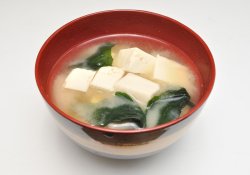Homemade Dashi Stock Recipes and curiosities
On this page you will learn the recipe and some information about the Japanese dish Homemade Dashi Stock Also known as dashi no tori kata.
Table of Content - About - Origin - Information - Ingredients - Preparation - Related
All about dashi no tori kata
Dashi is a Japanese bouillon widely used in the cuisine of that country.It is considered the basis of many dishes and an essential part of Japanese cuisine.
Dashi is made from simple ingredients, but together they create a unique and tasty flavor. One of the main ingredients is katsuobushi, a kind of beautiful dried and smoked fish. This ingredient is rich in umami, the fifth basic flavor, which is described as a salty and pleasant taste.
In addition to katsuobushi, dashi can also be made with kombu alga, which is a type of sea alga rich in nutrients. The combination of these two ingredients is what gives dashi its distinctive and delicious taste.
To make dashi, katsuobushi and kombu alga are placed in a pot with cold water and taken to the fire. When the water starts to boil, the fire is turned off and the ingredients are left in infusion for a few minutes.
Dashi is a versatile ingredient and can be used in soups, sauces, rice, among other dishes. It adds a subtle and umami taste to the preparations, making them even more tasty.
In addition, dashi is also considered a healthy ingredient, as it is rich in nutrients and does not contain preservatives or artificial additives.It is a homemade and natural bouillon option to replace industrialized boilers, which often contain high levels of sodium and other harmful health ingredients.
Dashi is also an important part of Japanese cuisine because it is an ingredient present in many traditional dishes, such as the famous lamen and the classic misso shiru, a soup based on misso, fermented soybeans.
In short, Dashi is a versatile, tasty and healthy Japanese bouillon that is the basis of many preparations of Japanese cuisine. With simple ingredients, it adds a unique and umami flavor to the dishes, making them even more delicious. It is worth trying and incorporating Dashi into your recipes.
Origin and history of Estoque de Dashi caseiro
Dashi is a traditional bouillon of Japanese cuisine that is based on beautiful dried fish, kombu (marine algae) and water. This bouillon is used as a basis for various dishes of Japanese cuisine, such as the famous missoshiru (miso soup) and yakisoba. Its origin dates back to the 7th century, when dashi was used to temper rice and later became used in other dishes. Today, dashi is considered one of the pillars of Japanese cuisine and is widely used in both restaurants and in home recipes.About the recipe
- Name of the plate: Homemade Dashi Stock
- Name of the dish in English: Homemade dashi stock
- Name of the plate in Japanese: 出汁の取り方
- Name of the Romanian dish: dashi no tori kata
Information about preparation
- Time to prepare: 35 minutes
- Time of Cooking: 5 minutes
- Difficulty: MEDIUM
- It suits: 1 people
- Occasions: Soups, fall, spring, summer, winter
Ingredients – Ingredients
Check out the necessary and optional ingredients Homemade Dashi StockIt makes sense to improvise
- 1 kelp kombu (size of a postcard)
- Frogs of fish Katsuobushi (Bonito)
- Shiitake mushrooms (for vegetarian option)
- Water
Watch a video of the recipe:
Recipes - How to Prepare
Now that you know the ingredients to make the recipe Homemade Dashi Stock. Follow the instructions below in the preparation mode or step by step.
How to prepare Dashi:
Start by opening the kombu algae package and cleaning it with a wet cloth to remove impurities from the surface.
Immerse the kombu in a large pot with cold water for 20 to 30 minutes.
Turn on the fire and let the water boil slowly.
Before the water boils completely, add the katsuobushi to the pot.
Cook for 1 minute without allowing the water to boil completely.
Remove the kombu and katsuobushi from the pot using a thin seedle.
For a vegetarian version, replace katsuobushi with shiitake mushrooms and let them infuse in cold water before heating and coating.
Domestic Dashi is ready to be used in various Japanese recipes.




